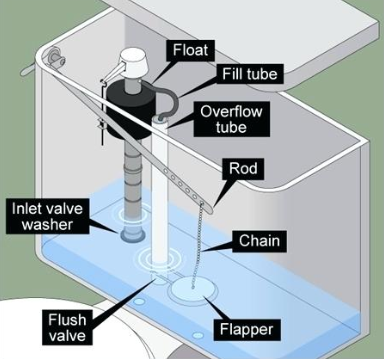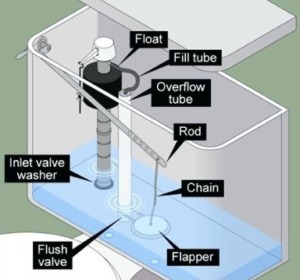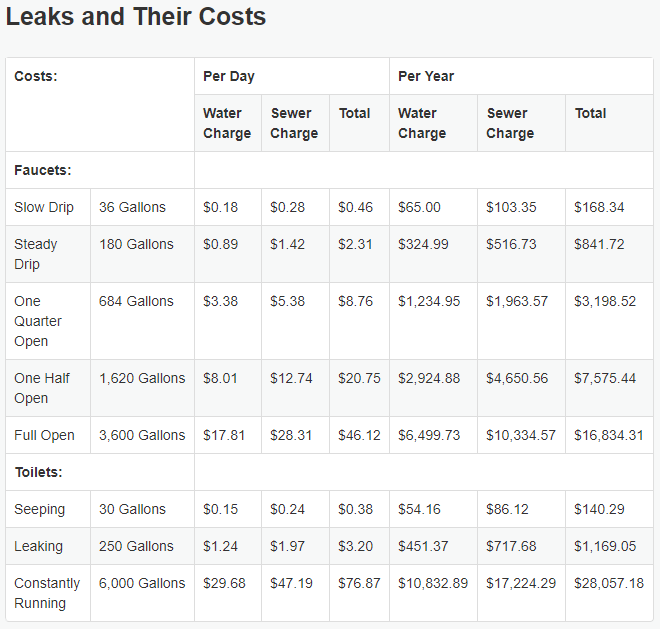

Blog
Water monitoring can impact an owner’s bottom line due to the high costs of leaks, which are more pervasive than you’d think.

Water monitoring can quickly become a building owner’s best friend. The high cost of water bills can often overshadow the cost of fuel and electricity bills, but ownership and management often believe that the price of their water bill is simply something to deal with. Many building owners pay the water bill for the entire building directly to their local utility without being aware of what’s going on inside their building or what they’re actually paying for. After all, without water monitoring, how would they know?
Water monitoring can impact an owner’s bottom line due to the high costs of leaks, which are more pervasive than you’d think.

While any water fixture can contribute to leaks and high water bills, toilets are typically the worst offenders. In toilets, rubber flappers can wear out, a flapper connected to the flush handle can have an incorrectly sized chain interfering with the seal, float mechanisms on the flush valve can be set too high causing the water level to go just above the overflow tube, or there can be tenant tampering.
Showers and sinks can also start leaking at any time. While typically at much lower capacities, these leaks can actually be easier to detect. By monitoring the water consumption in a building and observing hourly usage overnight, you can identify patterns that can quickly indicate a leak, eliminating the need to visually inspect all water fixtures in a building to determine the cause.
The idea that a single leak can last for an entire year may seem unreasonable, though the sad truth is many leaks can go undetected and/or unreported. To put water leaks into perspective, the chart below from the NYC DEP details the potential extent of leaks and their costs on a daily and yearly basis:

Water Monitoring is now required for Enterprise Green Communities (EGC) certification via one of three options:
Option 1: Metering cold-water branch off for each unit
Pros:
• Catches water use from all fixtures (toilets, faucets, dishwater, etc.)
• Pinpoints the source of water consumption
Cons:
• Costly to install meters for every unit
• Difficult installation and maintenance
Option 2: Metering cold-water riser lines
Pros:
• Catches all water use for individual riser lines
• Cost effective in a tall building
Cons:
• Requires valve installations for future meter maintenance
• Does not pinpoint the source of water use directly to a unit
• Requires an attentive staff to locate leaks
Option 3: Metering all toilets
Pros:
• Pinpoints toilet leaks, the largest source of leaks
• Simple installation
• Cost effective in large buildings
Cons:
• Requires a mesh network which can be valuable for future installs
• Misses all non-toilet water use/leaks
• Relies on residents to report non-toilet leaks
*All three options allow remote water leak detection and analysis to save water and money. All options also require the installation of water meters on all public laundry, outdoor water, commercially used water (if specified), and boiler make-up, which can help determine hot water consumption/leaks.
Water metering is only a part of the process to ensure reduction in water use. Analyzing water consumption data through an automated system to detect waste or inefficiencies and trigger alerts is how water can effectively be saved. Daily, hourly, even second-to-second data can be made available thanks to technological advancements.
When extended periods of atypical high consumption begin, a text or email can be triggered and sent to onsite staff to begin looking for the problem. With water monitoring, a $100 per week leak can be reduced to just dollars. According to EGC’s Frequently Asked Questions, “In a 2015 pilot across 26 NYC buildings, annual savings per building exceeded $18,000, which also exceeded the cost of installation.”
By installing valuable water meters and monitoring equipment, and utilizing them properly, building owners are empowered to decrease their water bills and contribute to water conservation nationwide.
Contributor: Jared Forman, Building Systems Analyst
Steven Winter Associates